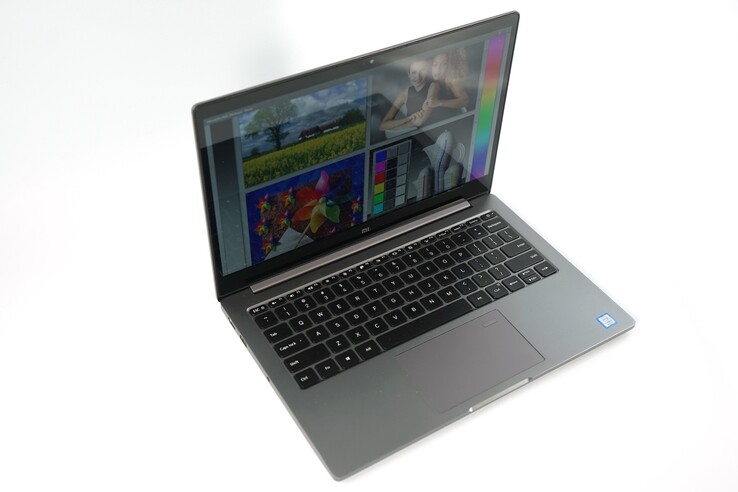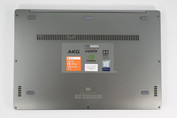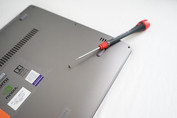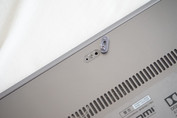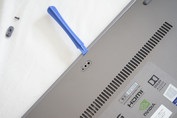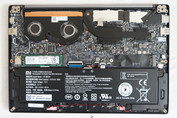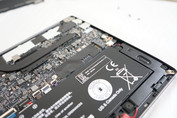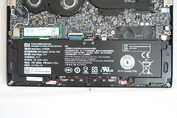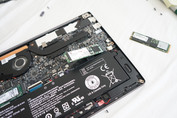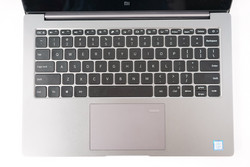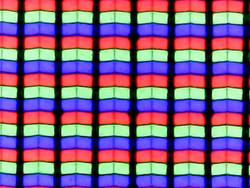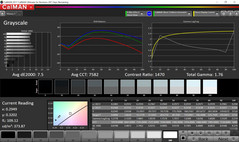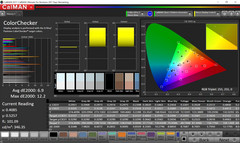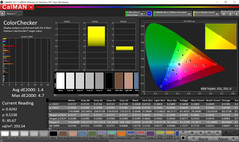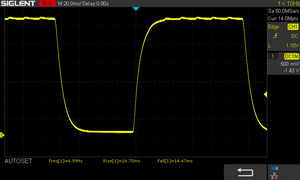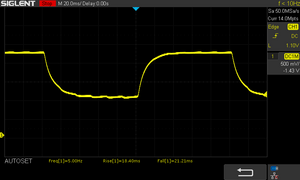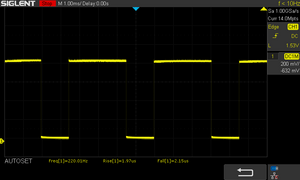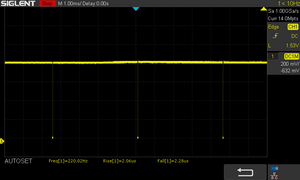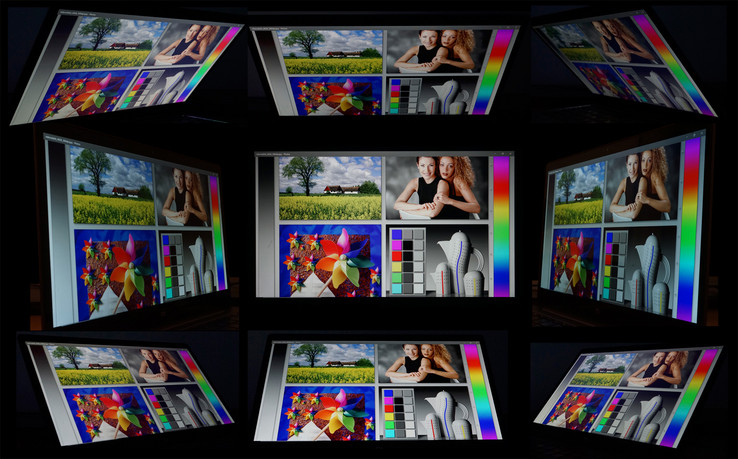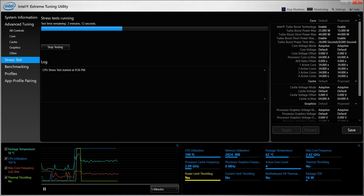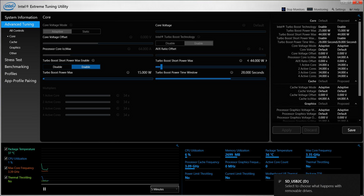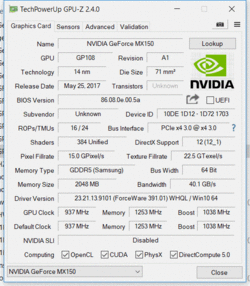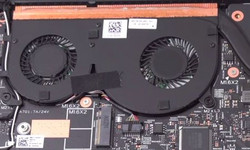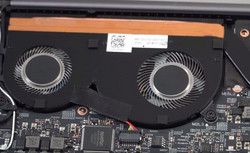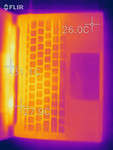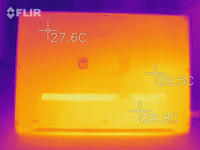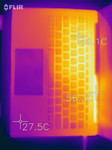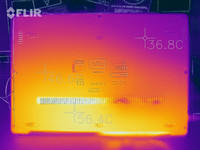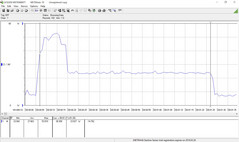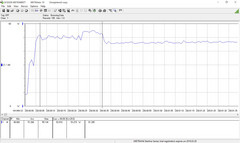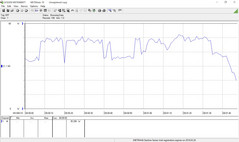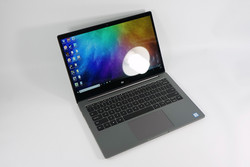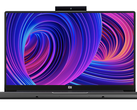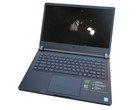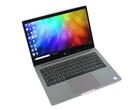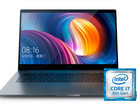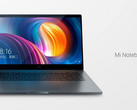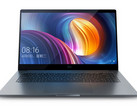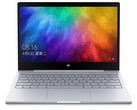Xiaomi Mi Notebook Air 13.3 2018 (i5-8250U MX150) Review

Around 18 months ago, we had Xiaomi’s first Mi Notebook Air in review. It featured a sixth-generation Intel Core processor, a dedicated Nvidia GeForce 940MX GPU, and a Samsung PM951 SSD. Two generations later and we are once again putting a Mi Notebook Air through its paces. The latest model features an Intel Core i5-8250U processor, 8 GB of RAM, a 256 GB SSD, and like the earlier model it has a dedicated GPU. In this case, there is an Nvidia GeForce MX150, albeit the more energy-efficient model running at lower clock speeds.
Due to glaring similarities with the 13-inch MacBook Pro (2017) this particular notebook is going to be our first and main competitor. Other competitors playing in the same league as the Notebook Air are the Asus ZenBook 13, the Lenovo IdeaPad 320S, and the HP Envy 13.
Our review sample was purchased by TechTablets’ Chris at Geekbuying in China. His review of the Xiaomi Notebook Air can be found on TechTablets.com.
Case
Xiaomi has opted for the minimalist approach once again and kept the case design as simple as possible: no logo on the display lid, and footprint, material, and design are identical to last year’s model. The only difference is the color: The new color, referred to as “Deep Gray”, is darker than last year’s Silver. Subjectively speaking, it does look more professional and premium than before. Unfortunately, it is more susceptible to scratches. Compared to the MacBook Pro the Xiaomi is certainly not as well made as the former. However, the differences are fairly small, and the Notebook Air surprised us with its build quality, its high-quality touch and feel, and its rigidity.
With a 30.9 x 21.1 cm footprint and a thickness of just 1.48 cm the Notebook Air is 5 mm wider than the MacBook Pro but at the same time 0.2 mm thinner. With the scale stopping at 1.31 kg, the Mi Notebook Air was neither the lightest nor the heaviest, but it was slightly lighter than the MacBook Pro. At just 5.71 mm, its display bezels are surprisingly narrow.
Connectivity
Just like the case, the connectivity has also been sacrificed to the deity of minimalism. On the left side we find a 3.5-mm audio jack, a USB 3.0 Type-A port, and an HDMI port that supports 4K at 30 Hz. On the right side we find a single USB Type-C port capable of 4K at 60 Hz. The Air supports PowerDelivery and is charged via this single USB-C port. A small LED indicates the current status: Orange while charging and green once the charge level has passed a certain threshold.
Communication
Wi-Fi capabilities are handled by Intel’s Dual-Band Wireless-AC 8265 chip with support for MU-MIMO (faster transfer speeds through simultaneous connections to multiple devices), which obviously requires support on the other side, namely the Wi-Fi router. The Air’s Wi-Fi performance was decent by and large, but nothing to write home about: It was within 10% of the average of all subnotebooks. WWAN support is not available for the Mi Notebook Air.
Security
A very fast fingerprint reader is embedded into the touchpad at the top right corner, and it reacted quickly and accurately to fingers placed on top of it. Unfortunately, it also responded to our finger during regular touchpad use.
Accessories
There are no accessories included in the nicely designed box besides the USB-C charger.
Operating System
As expected, the Mi Notebook Air ships with a Chinese version of Windows 10 Home 64-bit by default. What surprised us was the fact that we were unable to change the language of the preinstalled operating system: The notebook came preloaded with a single-language version of Windows. Xiaomi could have been more accommodating to international users, and there are basically only two ways out of this dilemma: Either by wiping the preloaded operating system and installing an English version from scratch or performing an in-place upgrade to Windows 10 Pro during which the language can be freely selected.
Maintenance
Disassembly requires the removal of eight torx screws, one of which is hidden underneath a rubber foot. Once the screws are undone, the bottom cover can be carefully popped open by using a credit card. We advise you against using sharp objects such as knives for this purpose. Once removed one has access to both M.2 slots. The RAM is not upgradeable.
Warranty
According to its website, Xiaomi sells its hardware with a 12-month limited warranty, although their definition of hardware is limited to smartphones only. It is thus hard to say how to file a warranty claim for a device purchased directly from China.
Please see our Guarantees, Return Policies and Warranties FAQ for country-specific information.
Input Devices
Keyboard
As usual, Xiaomi does not sell its hardware with keyboard layouts other than the default US layout. International users will thus have to either use a different mapping or simply get used to the new layout, which can take quite a while. The keyboard was pretty decent overall. Compared to last year’s model, the keys are no longer silver but black instead, which improved readability drastically especially once the backlight was switched on. Speaking of which, the backlight is not adjustable and can only be switched on or off. In terms of design, keyboard and backlight are now more similar to Apple’s MacBook. The quality of the keycap material has been improved noticeably; however, the keyboard does flex a bit when pressure is applied in the middle.
The Air’s keyboard is very similar to the one in the Mi Notebook Pro. The major difference is the gaps between the keys: Spacing is wider on the 15-inch model.
Touchpad
The touchpad is also very similar to the larger 15-inch Mi Notebook Pro. It is slightly smaller but just as smooth, accurate, and well supported by Windows thanks to its Precision Touchpad drivers. The touchpad, while obviously nowhere near to Apple’s Force Touch technology, was fairly decent for a Windows ClickPad.
Display
Featuring a reflective 13.3-inch IPS display made by Sharp (LQ133M1JW15) and protected by a layer of scratch-resistant sapphire glass, the panel offers a 1920x1080 FHD resolution without support for touch. Other display options, such as for example a 4K display, are not available.
| |||||||||||||||||||||||||
Brightness Distribution: 90 %
Center on Battery: 370 cd/m²
Contrast: 1609:1 (Black: 0.23 cd/m²)
ΔE ColorChecker Calman: 6.9 | ∀{0.5-29.43 Ø4.77}
calibrated: 1.4
ΔE Greyscale Calman: 7.4 | ∀{0.09-98 Ø5}
69.8% AdobeRGB 1998 (Argyll 3D)
91.6% sRGB (Argyll 3D)
67.8% Display P3 (Argyll 3D)
Gamma: 1.76
CCT: 7529 K
| Xiaomi Mi Notebook Air 13.3 2018 SHARP LQ133M1JW15, , 1920x1080, 13.3" | Asus ZenBook 13 UX331UN AU Optronics B133HAN04.9, , 1920x1080, 13.3" | Lenovo Ideapad 720S-13IKB LG Philips LGD04EF, , 1920x1080, 13.3" | HP Envy 13-ad006ng BOE070E, , 1920x1080, 13.3" | Apple MacBook Pro 13 2017 Touchbar i5 APPA034, , 2560x1600, 13.3" | Xiaomi Mi Notebook Pro i7 BOEhydis NV156FHM-N61, , 1920x1080, 15.6" | Xiaomi Mi Notebook Air 13.3 2016 Samsung LTN133HL09-M01, , 1920x1080, 13.3" | |
|---|---|---|---|---|---|---|---|
| Display | -7% | -10% | -6% | 26% | -1% | ||
| Display P3 Coverage (%) | 67.8 | 63.3 -7% | 64.3 -5% | 66.8 -1% | 98.6 45% | 66 -3% | |
| sRGB Coverage (%) | 91.6 | 86.7 -5% | 82.3 -10% | 86.3 -6% | 100 9% | 95.5 4% | |
| AdobeRGB 1998 Coverage (%) | 69.8 | 63.4 -9% | 60.2 -14% | 63.1 -10% | 86.5 24% | 67.8 -3% | |
| Response Times | 4% | 14% | -15% | -18% | -8% | ||
| Response Time Grey 50% / Grey 80% * (ms) | 39.6 ? | 44 ? -11% | 35 ? 12% | 48 ? -21% | 48 ? -21% | 49 ? -24% | |
| Response Time Black / White * (ms) | 29.3 ? | 24 ? 18% | 25 ? 15% | 32 ? -9% | 33.6 ? -15% | 27 ? 8% | |
| PWM Frequency (Hz) | 220 ? | 131000 ? | 1000 ? | 119000 ? | 50 ? | ||
| Screen | 7% | -13% | -2% | 27% | -0% | 13% | |
| Brightness middle (cd/m²) | 370 | 329 -11% | 335 -9% | 281 -24% | 551 49% | 317 -14% | 347 -6% |
| Brightness (cd/m²) | 355 | 306 -14% | 303 -15% | 264 -26% | 514 45% | 334 -6% | |
| Brightness Distribution (%) | 90 | 86 -4% | 85 -6% | 83 -8% | 88 -2% | 80 -11% | |
| Black Level * (cd/m²) | 0.23 | 0.3 -30% | 0.46 -100% | 0.23 -0% | 0.48 -109% | 0.352 -53% | 0.27 -17% |
| Contrast (:1) | 1609 | 1097 -32% | 728 -55% | 1222 -24% | 1148 -29% | 901 -44% | 1285 -20% |
| Colorchecker dE 2000 * | 6.9 | 4.07 41% | 5.09 26% | 4.83 30% | 0.8 88% | 4.5 35% | 3.29 52% |
| Colorchecker dE 2000 max. * | 12.2 | 7.05 42% | 11.92 2% | 8.89 27% | 1.4 89% | 9 26% | 4.69 62% |
| Colorchecker dE 2000 calibrated * | 1.4 | ||||||
| Greyscale dE 2000 * | 7.4 | 2.76 63% | 3.23 56% | 6.63 10% | 1 86% | 3.8 49% | 3.62 51% |
| Gamma | 1.76 125% | 2.56 86% | 2.18 101% | 1.85 119% | 2.16 102% | 2.17 101% | 2.23 99% |
| CCT | 7529 86% | 6915 94% | 6214 105% | 6794 96% | 6672 97% | 7307 89% | |
| Color Space (Percent of AdobeRGB 1998) (%) | 56 | 54 | 56 | 62 | |||
| Color Space (Percent of sRGB) (%) | 86 | 82 | 86 | 95 | |||
| Total Average (Program / Settings) | 1% /
3% | -3% /
-8% | -8% /
-5% | 12% /
20% | 0% /
-0% | 1% /
7% |
* ... smaller is better
The display’s maximum brightness of 370 nits and its brightness distribution of 90% were very good, which was also true for its black level (0.23 nits) and contrast ratio (1,609:1). Those last two were best in class in our test group, and the only notebook even brighter than the Air was Apple’s MacBook Pro (551 nits). Color and grayscale accuracy were slightly off out of the box, but we were able to reduce the DeltaE deviation to 1.4 through calibration.
Unfortunately, the display’s high brightness is somewhat foiled by its highly reflective protective glass cover. Accordingly, the notebook was only usable outdoors in the shade.
A negative is the Air’s very low PWM frequency for brightness levels of 18% and below. Like the 2016 model, our review unit’s display flickered at just 220 Hz, which can cause headaches and sore eyes. In these cases, brightness should never be decreased below 18%.
Display Response Times
| ↔ Response Time Black to White | ||
|---|---|---|
| 29.3 ms ... rise ↗ and fall ↘ combined | ↗ 14.8 ms rise | |
| ↘ 14.5 ms fall | ||
| The screen shows relatively slow response rates in our tests and may be too slow for gamers. In comparison, all tested devices range from 0.1 (minimum) to 240 (maximum) ms. » 78 % of all devices are better. This means that the measured response time is worse than the average of all tested devices (20.2 ms). | ||
| ↔ Response Time 50% Grey to 80% Grey | ||
| 39.6 ms ... rise ↗ and fall ↘ combined | ↗ 18.4 ms rise | |
| ↘ 21.2 ms fall | ||
| The screen shows slow response rates in our tests and will be unsatisfactory for gamers. In comparison, all tested devices range from 0.165 (minimum) to 636 (maximum) ms. » 60 % of all devices are better. This means that the measured response time is worse than the average of all tested devices (31.6 ms). | ||
Screen Flickering / PWM (Pulse-Width Modulation)
| Screen flickering / PWM detected | 220 Hz | ≤ 18 % brightness setting | |
| ≤ 100 cd/m² brightness | |||
The display backlight flickers at 220 Hz (worst case, e.g., utilizing PWM) Flickering detected at a brightness setting of 18 % (100 cd/m²) and below. There should be no flickering or PWM above this brightness setting. The frequency of 220 Hz is relatively low, so sensitive users will likely notice flickering and experience eyestrain at the stated brightness setting and below. Flickering occurs at relatively low brightness settings, so extended use at this brightness setting or lower can cause eyestrain. In comparison: 53 % of all tested devices do not use PWM to dim the display. If PWM was detected, an average of 8084 (minimum: 5 - maximum: 343500) Hz was measured. | |||
Performance
The Mi Notebook Air’s unmodified case now features an eighth-generation Intel Core processor, and buyers have the choice between the Core i5-8250U and the Core i7-8550U. Our review unit was equipped with the former. In addition, it also featured 8 GB of RAM, a dedicated GeForce MX150 GPU with 2 GB of RAM in addition to the integrated Intel UHD Graphics 620 GPU, and a Samsung PM961 SSD. Based on these specs, we expect a fast and responsive system capable of running current games on medium details. Let’s find out whether or not our expectations were met.
Processor
As mentioned before, the Mi Notebook Air now comes equipped with an Intel Core i5-8250U microprocessor with four cores and up to eight threads, effectively doubling the core- and thread-count from last year’s model based on Intel’s seventh-generation processors. The main difference between the i5-8250U and the i7-8550U is maximum clock speed: While the latter can run at up to 4 GHz on two cores and 3.7 GHz on all four cores, the former hits a ceiling at 3.4 GHz. All that with a TDP of just 15 W for both CPUs.
As can be seen below, our imported notebook featured a default setting of 15 W and a Turbo Boost Short Power Max for up to 28 seconds.
In Cinebench R15, we found our expectations met. The single-core score was average for an i5-8250U device and on a par with Dell’s XPS 13, which is more than acceptable for the Chinese manufacturer. The identically equipped Lenovo IdeaPad was much slower, and the HP Spectre 13 with its 600 MHz faster i7-8550U was not any quicker than the Air.
The multithread scores with load on all four cores paint a slightly different picture, though, and at just 522 points the Air scored significantly worse than average (582 points). The 15.6-inch Mi Notebook Pro equipped with the exact same CPU managed to squeeze out 576 points, and we suspect thermal issues to be the culprits here. Further details on this issue can be found below. The massive performance improvement when going from two to four cores can be best seen when comparing the HP Envy 13 (i7-7500U) with the Xiaomi Mi Notebook Air: The latter is 48% faster.
The Air’s behavior remained largely inconspicuous when running Cinebench R15 in a loop. Thermal throttling could be witnessed right from the start, and scores dropped from 522 to 492 points (around 6%) immediately. Throttling continued throughout the entire test and Cinebench scores settled around that very level. Thus, the Xiaomi Mi Notebook Air was about as fast as the Acer Spin 5.
System Performance
Overall system performance was also very decent, and the Mi Notebook Air found its place surrounded by other similarly equipped notebooks. It is worth noting that all devices in our test group were very close to each other, and that there were no peaks one way or another, save for maybe the Dell XPS 13’s Home Score Accelerated score. One way to improve performance somewhat would have been for Xiaomi to install a second RAM module thereby enabling dual-channel mode.
| PCMark 8 Home Score Accelerated v2 | 3656 points | |
| PCMark 8 Creative Score Accelerated v2 | 5244 points | |
| PCMark 8 Work Score Accelerated v2 | 4811 points | |
| PCMark 10 Score | 3467 points | |
Help | ||
Storage Devices
The only available storage option for the Xiaomi Mi Notebook Air is the aforementioned 256 GB Samsung PM961 SSD. Once again, the PM961 flexed its muscles and outperformed all other manufacturers in the most important “Write 4k QD32”, “Read 4k QD32”, “Write 4k” and “Read 4k” categories. Accordingly, the Xiaomi Mi Notebook Air felt very responsive and fast. Keep in mind that AS SSD benchmark scores for the Air are incorrect due to the RST driver bug that disables the onboard cache, resulting in write requests getting passed through directly to the SSD’s NAND flash.
The notebook features a second M.2 slot for secondary SSDs, which seems to support SATA SSDs only.
| Xiaomi Mi Notebook Air 13.3 2018 Samsung PM961 MZVLW256HEHP | Asus ZenBook 13 UX331UN SK Hynix HFS256G39TND-N210A | Lenovo IdeaPad 320S-13IKB Samsung PM961 NVMe MZVLW512HMJP | HP Envy 13-ad006ng Toshiba NVMe THNSN5256GPUK | Dell XPS 13 9370 FHD i5 Toshiba XG5 KXG50ZNV256G | Xiaomi Mi Notebook Air 13.3 2016 Samsung PM951 NVMe MZVLV256 | Average Samsung PM961 MZVLW256HEHP | |
|---|---|---|---|---|---|---|---|
| CrystalDiskMark 3.0 | -51% | 5% | -36% | -16% | -15% | 3% | |
| Read Seq (MB/s) | 1288 | 435.6 -66% | 1372 7% | 1019 -21% | 1875 46% | 1209 -6% | 1627 ? 26% |
| Write Seq (MB/s) | 1160 | 263 -77% | 1010 -13% | 195.4 -83% | 352.7 -70% | 314 -73% | 1136 ? -2% |
| Read 512 (MB/s) | 751 | 258.1 -66% | 821 9% | 735 -2% | 840 12% | 887 ? 18% | |
| Write 512 (MB/s) | 843 | 256.6 -70% | 636 -25% | 172.3 -80% | 353.9 -58% | 781 ? -7% | |
| Read 4k (MB/s) | 59.2 | 30.37 -49% | 56.8 -4% | 34.5 -42% | 34.18 -42% | 43.4 -27% | 53 ? -10% |
| Write 4k (MB/s) | 146.9 | 78.6 -46% | 142.6 -3% | 109.4 -26% | 127.5 -13% | 153.4 4% | 126.7 ? -14% |
| Read 4k QD32 (MB/s) | 425.9 | 356.8 -16% | 537 26% | 494.6 16% | 381.8 -10% | 487.6 14% | 419 ? -2% |
| Write 4k QD32 (MB/s) | 325 | 257.2 -21% | 475 46% | 161.3 -50% | 339.9 5% | 312.2 -4% | 384 ? 18% |
GPU Performance
It is surprising to find a dedicated GeForce MX150 GPU with access to 2 GB of GDDR5 RAM in a small 13.3-inch device - definitely an exception in the sub-$1,000 subnotebook category. The only other competitor equipped with the same GPU and CPU is the Lenovo IdeaPad 320S, and that device performed very poorly in our GPU benchmarks.
The GeForce MX150 is the successor of the GeForce GTX 940MX and is clocked around 300 MHz higher than the latter. Most current games should run smoothly on low details, and most older games should run just fine on medium details.
| 3DMark 11 - 1280x720 Performance GPU | |
| Average of class Subnotebook (995 - 16296, n=65, last 2 years) | |
| Average NVIDIA GeForce MX150 (2796 - 4905, n=47) | |
| Xiaomi Mi Notebook Air 13.3 2018 | |
| 3DMark | |
| 1280x720 Cloud Gate Standard Graphics | |
| Average of class Subnotebook (5577 - 61591, n=28, last 2 years) | |
| Average NVIDIA GeForce MX150 (16227 - 22183, n=43) | |
| Xiaomi Mi Notebook Air 13.3 2018 | |
| 1920x1080 Fire Strike Graphics | |
| Average of class Subnotebook (832 - 10333, n=67, last 2 years) | |
| Average NVIDIA GeForce MX150 (2323 - 3739, n=44) | |
| Xiaomi Mi Notebook Air 13.3 2018 | |
| 3DMark 06 Standard Score | 19210 points | |
| 3DMark 11 Performance | 3820 points | |
| 3DMark Cloud Gate Standard Score | 12569 points | |
| 3DMark Fire Strike Score | 2617 points | |
Help | ||
| Clock Speed | |
| 1280x720 GPU Clock Speed Furmark 1.19 GPU Stress Test | |
| Xiaomi Mi Notebook Pro i5 | |
| Xiaomi Mi Notebook Pro i7 | |
| Xiaomi Mi Notebook Air 13.3 2018 | |
| GPU Clock Witcher 3 ultra | |
| Xiaomi Mi Notebook Pro i7 | |
| Xiaomi Mi Notebook Pro i5 | |
| Xiaomi Mi Notebook Air 13.3 2018 | |
| GPU Clock Speed GPU-Z Render Test (max.) | |
| Xiaomi Mi Notebook Pro i7 | |
| Xiaomi Mi Notebook Pro i5 | |
| Xiaomi Mi Notebook Air 13.3 2018 | |
| Temperatures | |
| GPU Temperature Witcher 3 ultra | |
| Xiaomi Mi Notebook Air 13.3 2018 | |
| Xiaomi Mi Notebook Pro i7 | |
| Xiaomi Mi Notebook Pro i5 | |
| 1280x720 GPU Temperature Furmark 1.19 | |
| Xiaomi Mi Notebook Air 13.3 2018 | |
| Xiaomi Mi Notebook Pro i7 | |
| Xiaomi Mi Notebook Pro i5 | |
Gaming Performance
Quite often, dedicated GPUs in notebooks give rise to dreams of decent 3D performance and a smooth gameplay experience, and with its dedicated GeForce MX150 the Xiaomi Mi Notebook Air is no different. Unfortunately, this particular model of the MX150 is the more energy-efficient throttled edition, which had a noticeable effect on all gaming benchmarks we threw at the device: The Mi Notebook Air performed worse than the average GeForce MX150-equipped notebook.
Nevertheless it was still much faster than the average subnotebook, which became glaringly obvious in our gaming benchmarks. Most subnotebooks are limited to Intel’s integrated UHD 620 GPU and are thus unsuited for running games in higher levels of detail due to the low single-digit frame rates this would yield. Accordingly, for most iGPU-only notebooks these benchmark results are entirely missing.
| Final Fantasy XV Benchmark - 1280x720 Lite Quality | |
| Average of class Subnotebook (21.4 - 97.1, n=69, last 2 years) | |
| Xiaomi Mi Notebook Pro i7 | |
| Average NVIDIA GeForce MX150 (23 - 36.9, n=7) | |
| Xiaomi Mi Notebook Air 13.3 2018 | |
| Asus ZenBook 13 UX331UN | |
| Rainbow Six Siege | |
| 1366x768 Medium Preset AA:T AF:2x | |
| Average NVIDIA GeForce MX150 (69.7 - 87, n=4) | |
| Xiaomi Mi Notebook Air 13.3 2018 | |
| 1920x1080 High Preset AA:T AF:4x | |
| Average NVIDIA GeForce MX150 (37.9 - 45.8, n=4) | |
| Xiaomi Mi Notebook Air 13.3 2018 | |
| 1920x1080 Ultra Preset AA:T AF:16x | |
| Average NVIDIA GeForce MX150 (18.3 - 31.3, n=4) | |
| Xiaomi Mi Notebook Air 13.3 2018 | |
| The Division | |
| 1920x1080 High Preset AF:8x | |
| Average NVIDIA GeForce MX150 (17.5 - 22.4, n=3) | |
| Xiaomi Mi Notebook Air 13.3 2018 | |
| 1280x720 Low Preset AF:1x | |
| Average NVIDIA GeForce MX150 (59.5 - 75, n=3) | |
| Xiaomi Mi Notebook Air 13.3 2018 | |
| 1366x768 Medium Preset AF:4x | |
| Average NVIDIA GeForce MX150 (38.1 - 47.1, n=3) | |
| Xiaomi Mi Notebook Air 13.3 2018 | |
| Overwatch | |
| 1920x1080 High (Render Scale 100 %) AA:SM AF:4x | |
| Acer Swift 3 SF315-51G-57E5 | |
| Average NVIDIA GeForce MX150 (38.2 - 74.5, n=9) | |
| Xiaomi Mi Notebook Pro i7 | |
| Samsung Notebook 9 NP900X5T-X01US | |
| Xiaomi Mi Notebook Pro i5 | |
| Xiaomi Mi Notebook Air 13.3 2018 | |
| 1920x1080 Epic (Render Scale 100 %) AA:SM AF:16x | |
| Acer Swift 3 SF315-51G-57E5 | |
| Average NVIDIA GeForce MX150 (25.1 - 41.9, n=9) | |
| Xiaomi Mi Notebook Pro i7 | |
| Xiaomi Mi Notebook Pro i5 | |
| Samsung Notebook 9 NP900X5T-X01US | |
| Xiaomi Mi Notebook Air 13.3 2018 | |
| For Honor | |
| 1280x720 Low Preset | |
| Average NVIDIA GeForce MX150 (60 - 91, n=4) | |
| Xiaomi Mi Notebook Air 13.3 2018 | |
| 1920x1080 High Preset AA:T AF:8x | |
| Average NVIDIA GeForce MX150 (25.2 - 30.7, n=3) | |
| Xiaomi Mi Notebook Air 13.3 2018 | |
| 1920x1080 Extreme Preset AA:T AF:16x | |
| Average NVIDIA GeForce MX150 (19.4 - 22.5, n=3) | |
| Xiaomi Mi Notebook Air 13.3 2018 | |
| Ghost Recon Wildlands - 1280x720 Low Preset | |
| Average NVIDIA GeForce MX150 (39.5 - 54, n=3) | |
| Xiaomi Mi Notebook Air 13.3 2018 | |
| Rocket League | |
| 1280x720 Performance | |
| Xiaomi Mi Notebook Air 13.3 2018 | |
| Average NVIDIA GeForce MX150 (127.6 - 160, n=4) | |
| 1920x1080 Quality AA:Medium FX | |
| Average NVIDIA GeForce MX150 (54.3 - 76.1, n=5) | |
| Xiaomi Mi Notebook Air 13.3 2018 | |
| 1920x1080 High Quality AA:High FX | |
| Average NVIDIA GeForce MX150 (37.8 - 59.8, n=6) | |
| Xiaomi Mi Notebook Air 13.3 2018 | |
| Destiny 2 | |
| 1280x720 Low Preset | |
| Xiaomi Mi Notebook Air 13.3 2018 | |
| Asus ZenBook 13 UX331UN | |
| Average NVIDIA GeForce MX150 (29.1 - 62.2, n=4) | |
| Samsung Notebook 9 NP900X5T-X01US | |
| 1920x1080 Medium Preset AA:FX AF:2x | |
| Xiaomi Mi Notebook Air 13.3 2018 | |
| Asus ZenBook 13 UX331UN | |
| Average NVIDIA GeForce MX150 (10.8 - 34.7, n=4) | |
| Samsung Notebook 9 NP900X5T-X01US | |
| Assassin´s Creed Origins | |
| 1280x720 Very Low Preset | |
| Average NVIDIA GeForce MX150 (42 - 47, n=3) | |
| Xiaomi Mi Notebook Air 13.3 2018 | |
| Xiaomi Mi Notebook Pro i7 | |
| 1920x1080 Medium Preset | |
| Xiaomi Mi Notebook Pro i7 | |
| Average NVIDIA GeForce MX150 (18 - 22, n=3) | |
| Xiaomi Mi Notebook Air 13.3 2018 | |
| Kingdom Come: Deliverance | |
| 1280x720 Low Preset | |
| Average NVIDIA GeForce MX150 (40.1 - 51.6, n=2) | |
| Average of class Subnotebook (n=1last 2 years) | |
| Xiaomi Mi Notebook Air 13.3 2018 | |
| 1920x1080 Medium Preset | |
| Average of class Subnotebook (n=1last 2 years) | |
| Average NVIDIA GeForce MX150 (18.4 - 22.1, n=2) | |
| Xiaomi Mi Notebook Air 13.3 2018 | |
| low | med. | high | ultra | |
|---|---|---|---|---|
| BioShock Infinite (2013) | 29.7 | |||
| The Witcher 3 (2015) | 9.7 | |||
| World of Warships (2015) | 42.1 | |||
| Rainbow Six Siege (2015) | 74 | 38 | 24.3 | |
| The Division (2016) | 59.5 | 38.1 | 17 | |
| Overwatch (2016) | 42.9 | 26.9 | ||
| Civilization 6 (2016) | 76 | 44.8 | 20.3 | |
| For Honor (2017) | 60 | 26.5 | 25.2 | 19.4 |
| Ghost Recon Wildlands (2017) | 39.5 | 18.8 | ||
| Warhammer 40.000: Dawn of War III (2017) | 60 | |||
| Rocket League (2017) | 156 | 57.1 | 39.9 | |
| Middle-earth: Shadow of War (2017) | 56.3 | 27.7 | 14.6 | 11.1 |
| Destiny 2 (2017) | 51.6 | 29.7 | ||
| Assassin´s Creed Origins (2017) | 44 | 18 | ||
| Final Fantasy XV Benchmark (2018) | 29.3 | |||
| Kingdom Come: Deliverance (2018) | 40.1 | 18.4 | ||
| X-Plane 11.11 (2018) | 57 | 46 | 41.8 |
Unlike the CPU, the GPU was not throttled under sustained load at all. Neither The Witcher 3 (see graph below) nor the 3DMark Time Spy stress test showed any significant decreases in frame rate.
Emissions
System Noise
When idle (for example during our Reader battery test) both fans were switched off, and the device was virtually completely silent. However, due to the smaller heat sinks when compared to the 15-inch model the fans had to kick in much sooner and could thus be heard every now and then even in low-load scenarios. For example, this happened when installing a Windows update, which caused a CPU load of roughly 20%.
The sound pressure level under load was 43-44 dB(A) with little to no difference between gaming and maximum load. With a peak at 1,600 Hz, the overall frequency was fairly low and the fans were thus mostly unobtrusive by and large.
Noise level
| Idle |
| 30.6 / 30.6 / 31.4 dB(A) |
| Load |
| 43.6 / 44.2 dB(A) |
 | ||
30 dB silent 40 dB(A) audible 50 dB(A) loud |
||
min: | ||
Temperature
The 2016 Mi Notebook Air model suffered from high temperatures, but while the case remained untouched Xiaomi did upgrade the internal fans. Not only was the amount of blades increased and the blades themselves enlarged, the new heatpipe is now also 37% longer than on the previous model. Unfortunately, these modifications seem to have gone largely unnoticed as temperatures under high load once again exceeded our comfort level by a significant amount.
The upper half of the keyboard got extremely hot, with surface temperatures passing the 50 °C threshold and the left side being significantly warmer than the right. At the bottom, temperatures rose up to 47 °C. That being said, it is worth noting that the 2016 model suffered from surface temperatures of 50 °C in the center of the keyboard while the 2018 model’s center temperatures were measured at “just” 44 °C. In return, the left side of the palm rest got uncomfortably warm.
(-) The maximum temperature on the upper side is 50 °C / 122 F, compared to the average of 35.9 °C / 97 F, ranging from 21.4 to 59 °C for the class Subnotebook.
(-) The bottom heats up to a maximum of 47 °C / 117 F, compared to the average of 39.3 °C / 103 F
(+) In idle usage, the average temperature for the upper side is 25.8 °C / 78 F, compared to the device average of 30.8 °C / 87 F.
(±) Playing The Witcher 3, the average temperature for the upper side is 36.3 °C / 97 F, compared to the device average of 30.8 °C / 87 F.
(+) The palmrests and touchpad are reaching skin temperature as a maximum (34 °C / 93.2 F) and are therefore not hot.
(-) The average temperature of the palmrest area of similar devices was 28.2 °C / 82.8 F (-5.8 °C / -10.4 F).
Speakers
The most noticeable sound characteristic was the Air’s complete lack of bass. While mids and highs turned out to be decent overall it seems as if optimizing the sound output for the unmodified thin case was harder than anticipated. The older 2016 model suffered from the same issues, but at least maximum volume on the current model has been increased considerably.
Xiaomi Mi Notebook Air 13.3 2018 audio analysis
(±) | speaker loudness is average but good (79.3 dB)
Bass 100 - 315 Hz
(-) | nearly no bass - on average 21.5% lower than median
(±) | linearity of bass is average (13.9% delta to prev. frequency)
Mids 400 - 2000 Hz
(+) | balanced mids - only 2.2% away from median
(+) | mids are linear (3.7% delta to prev. frequency)
Highs 2 - 16 kHz
(+) | balanced highs - only 2.4% away from median
(+) | highs are linear (3% delta to prev. frequency)
Overall 100 - 16.000 Hz
(±) | linearity of overall sound is average (20.4% difference to median)
Compared to same class
» 64% of all tested devices in this class were better, 8% similar, 27% worse
» The best had a delta of 5%, average was 18%, worst was 53%
Compared to all devices tested
» 53% of all tested devices were better, 8% similar, 39% worse
» The best had a delta of 4%, average was 24%, worst was 134%
Apple MacBook 12 (Early 2016) 1.1 GHz audio analysis
(+) | speakers can play relatively loud (83.6 dB)
Bass 100 - 315 Hz
(±) | reduced bass - on average 11.3% lower than median
(±) | linearity of bass is average (14.2% delta to prev. frequency)
Mids 400 - 2000 Hz
(+) | balanced mids - only 2.4% away from median
(+) | mids are linear (5.5% delta to prev. frequency)
Highs 2 - 16 kHz
(+) | balanced highs - only 2% away from median
(+) | highs are linear (4.5% delta to prev. frequency)
Overall 100 - 16.000 Hz
(+) | overall sound is linear (10.2% difference to median)
Compared to same class
» 7% of all tested devices in this class were better, 2% similar, 91% worse
» The best had a delta of 5%, average was 18%, worst was 53%
Compared to all devices tested
» 4% of all tested devices were better, 1% similar, 94% worse
» The best had a delta of 4%, average was 24%, worst was 134%
Energy Management
Power Consumption
Compared with the average subnotebook and notebook equipped with the exact same hardware, the Mi Notebook Air’s power consumption was not bad at all. In fact, the Air was slightly better than average. That being said, at 10 W its power consumption was a bit higher than the average MX150-equipped 13-inch notebook. The amazingly efficient ZenBook 13 UX331UA was particularly impressive and consumed up to 20% less energy than the Mi Notebook Air. The dual-core and 940MX-equipped predecessor was also slightly more efficient, although at 3% the difference is negligible.
| Xiaomi Mi Notebook Air 13.3 2018 i5-8250U, GeForce MX150, Samsung PM961 MZVLW256HEHP, IPS, 1920x1080, 13.3" | Asus ZenBook 13 UX331UN i5-8550U, GeForce MX150, SK Hynix HFS256G39TND-N210A, IPS, 1920x1080, 13.3" | Lenovo IdeaPad 320S-13IKB i5-8250U, GeForce MX150, Samsung PM961 NVMe MZVLW512HMJP, IPS LED, 1920x1080, 13.3" | HP Envy 13-ad006ng i7-7500U, GeForce MX150, Toshiba NVMe THNSN5256GPUK, IPS LED, 1920x1080, 13.3" | Apple MacBook Pro 13 2017 Touchbar i5 i5-7267U, Iris Plus Graphics 650, Apple SSD AP0256, IPS, 2560x1600, 13.3" | Dell XPS 13 9370 FHD i5 i5-8250U, UHD Graphics 620, Toshiba XG5 KXG50ZNV256G, IPS, 1920x1080, 13.3" | Xiaomi Mi Notebook Air 13.3 2016 6200U, GeForce 940MX, Samsung PM951 NVMe MZVLV256, IPS, 1920x1080, 13.3" | Average Intel Core i5-8250U, NVIDIA GeForce MX150 | Average of class Subnotebook | |
|---|---|---|---|---|---|---|---|---|---|
| Power Consumption | 20% | -0% | 7% | -22% | 17% | 3% | -11% | -7% | |
| Idle Minimum * (Watt) | 3.9 | 2.2 44% | 3.4 13% | 2.8 28% | 2.8 28% | 3.14 19% | 4 -3% | 3.97 ? -2% | 3.99 ? -2% |
| Idle Average * (Watt) | 7 | 5 29% | 6.1 13% | 5.8 17% | 10.9 -56% | 5.22 25% | 6.6 6% | 7.34 ? -5% | 6.86 ? 2% |
| Idle Maximum * (Watt) | 7.5 | 8 -7% | 7.7 -3% | 7.7 -3% | 11.4 -52% | 6 20% | 7.4 1% | 9.14 ? -22% | 8.49 ? -13% |
| Load Average * (Watt) | 44.4 | 33 26% | 44.2 -0% | 48 -8% | 55.4 -25% | 38.5 13% | 41.7 6% | 50.2 ? -13% | 43.9 ? 1% |
| Witcher 3 ultra * (Watt) | 32.8 | 37.6 -15% | 35 -7% | ||||||
| Load Maximum * (Watt) | 55.1 | 49.4 10% | 60.3 -9% | 48 13% | 57.5 -4% | 50.4 9% | 52.4 5% | 61.2 ? -11% | 67.1 ? -22% |
* ... smaller is better
Battery Life
In light of the mediocre power consumption, installing a 39 Wh battery was probably not the smartest choice. Accordingly, the Air’s battery life was considerably shorter than most of its competitors and akin to the 2016 Mi Notebook Air model. The Air thus failed to satisfy one of the most important criteria of a 13-inch subnotebook: mobility.
| Xiaomi Mi Notebook Air 13.3 2018 i5-8250U, GeForce MX150, 39 Wh | Asus ZenBook 13 UX331UN i5-8550U, GeForce MX150, 50 Wh | Lenovo IdeaPad 320S-13IKB i5-8250U, GeForce MX150, 36 Wh | HP Envy 13-ad006ng i7-7500U, GeForce MX150, 51 Wh | Apple MacBook Pro 13 2017 Touchbar i5 i5-7267U, Iris Plus Graphics 650, 49.2 Wh | Dell XPS 13 9370 FHD i5 i5-8250U, UHD Graphics 620, 52 Wh | Xiaomi Mi Notebook Air 13.3 2016 6200U, GeForce 940MX, 40 Wh | Average of class Subnotebook | |
|---|---|---|---|---|---|---|---|---|
| Battery runtime | 39% | -12% | 31% | 7% | 71% | -1% | 103% | |
| Reader / Idle (h) | 13 | 20.7 59% | 12.3 -5% | 20 54% | 23.6 82% | 12 -8% | 30.7 ? 136% | |
| H.264 (h) | 8 | 8.9 11% | 5.8 -27% | 7.9 -1% | 6.9 -14% | 13.9 74% | 7.1 -11% | 16.7 ? 109% |
| WiFi v1.3 (h) | 6.1 | 9 48% | 5.7 -7% | 7.1 16% | 8.7 43% | 10.7 75% | 6.5 7% | 13.4 ? 120% |
| Witcher 3 ultra (h) | 1.4 | |||||||
| Load (h) | 1.3 | 1.8 38% | 1.2 -8% | 2 54% | 1.2 -8% | 2 54% | 1.4 8% | 1.929 ? 48% |
Verdict
Pros
Cons
When importing a device straight from China one of the most important justifications is usually the device’s low price. Given that the notebook is not yet available outside of China one has to overcome several obstacles along the way, among others the fact that the entire purchasing decision must be based solely on other people’s reviews as there is no way to take a closer look at the device in a nearby store. At least in regard to quality we can assure you that our review unit was much more than just acceptable. Keep in mind that shipping costs, customs and import taxes may make the device much more expensive in the end and that filing a warranty claim across the ocean has the potential to turn into a nightmare in the blink of an eye. Once purchased, shipped, and received buyers are faced with a Chinese version of Windows which, unless they happen to be comfortable with Mandarin, must be replaced with an English version of the OS.
Generally speaking, the MX150-equipped Mi Notebook Air is pretty decent. Despite the thin and compact case it is capable of short bursts of high CPU performance, and GPU performance is adequate for many current games.
Unfortunately, heat and noise under load were too high, and the Mi Notebook Air would have certainly benefitted from an upgraded and modified case. High surface temperatures, thermal throttling, and rapid drops in CPU performance are clear indications of a case overburdened by its powerful internal components. Opting for the 10 W MX150 SKU did not help much either, and if you need more performance the 15-inch model would probably be the better choice.
The bright 13-inch display was very good, although it was also very glossy and highly reflective outdoors by design. Those of our readers who plan on using the notebook mostly stationary connected to an external display should keep the HDMI port’s 30 Hz limitation in mind. While the USB-C port supports 60 Hz it is most likely going to be hooked up to the power supply in this scenario. Battery life was substandard and more or less on a par with the device’s slower predecessor.
13-inch alternatives equipped with an MX150 are rare at the Mi Air’s price point, which makes this notebook much more interesting. The Lenovo IdeaPad 320S (13-inch, Core i5-8250U) was considerably slower in all GPU and CPU benchmarks, and the HP Envy 13 while able to keep up with the Air in regards to GPU performance (thanks to its MX150 GPU) tanked when it came to CPU performance due to its older Core i7-7500U dual-core CPU and scored 32% less in Cinebench’s multi-core test. On the other hand, its PCMark scores were similar to the Air’s. Nevertheless, Intel’s seventh-generation chip with just two cores is old news in 2018.
Thus, if you’re looking for an affordable and somewhat gaming-capable 13-inch subnotebook and don’t mind the potentially adventurous import from China then the Xiaomi Mi Notebook Air might be the perfect match. However, we strongly urge potential buyers to also take a look at the larger 15-inch Xiaomi Mi Notebook Pro (Core i5-8250U, GeForce MX150) with a much more powerful cooling system.
Xiaomi Mi Notebook Air 13.3 2018
- 03/20/2018 v6 (old)
Klaus Hinum, Daniel Puschina




